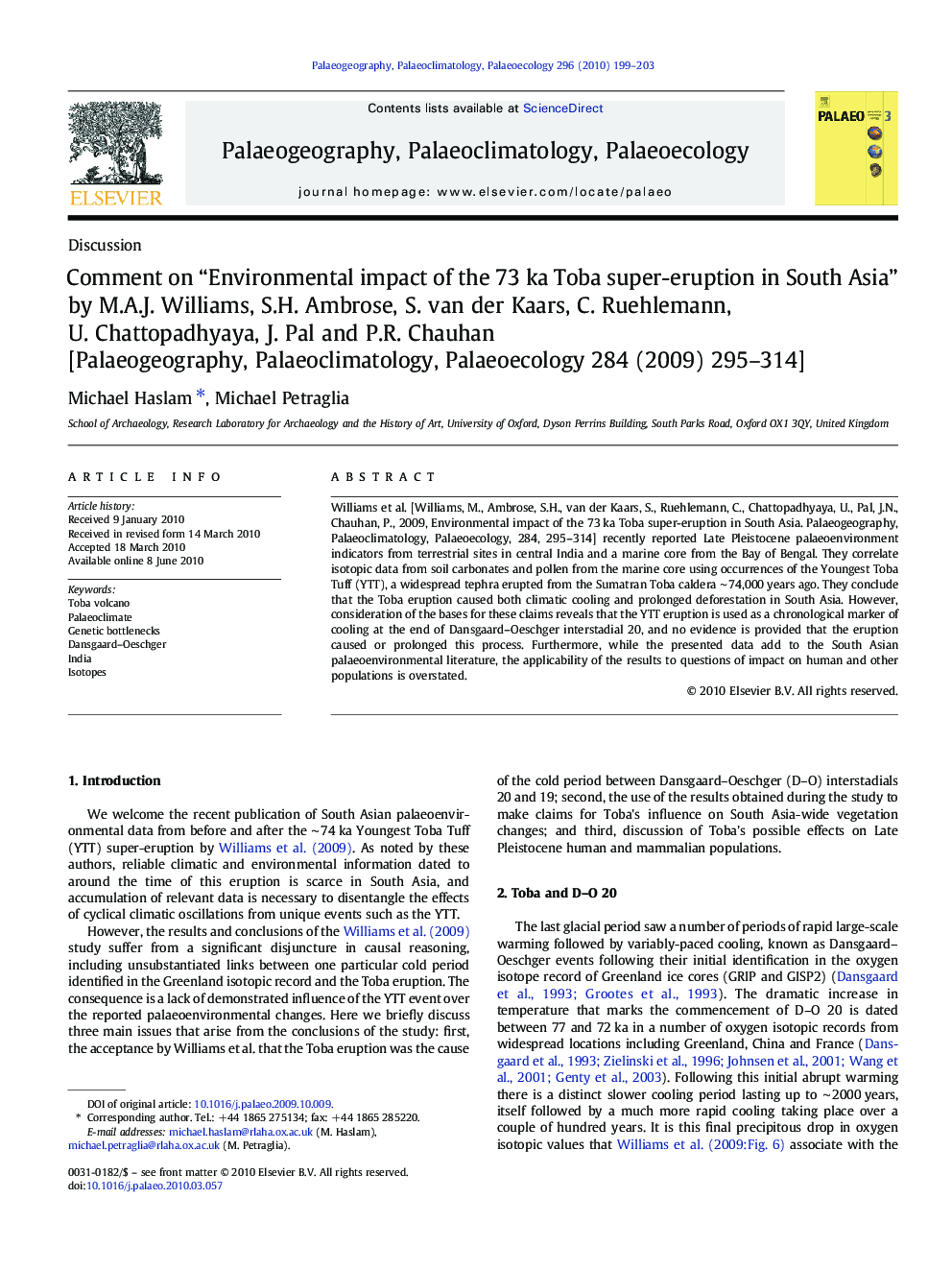| Article ID | Journal | Published Year | Pages | File Type |
|---|---|---|---|---|
| 4467667 | Palaeogeography, Palaeoclimatology, Palaeoecology | 2010 | 5 Pages |
Williams et al. [Williams, M., Ambrose, S.H., van der Kaars, S., Ruehlemann, C., Chattopadhyaya, U., Pal, J.N., Chauhan, P., 2009, Environmental impact of the 73 ka Toba super-eruption in South Asia. Palaeogeography, Palaeoclimatology, Palaeoecology, 284, 295–314] recently reported Late Pleistocene palaeoenvironment indicators from terrestrial sites in central India and a marine core from the Bay of Bengal. They correlate isotopic data from soil carbonates and pollen from the marine core using occurrences of the Youngest Toba Tuff (YTT), a widespread tephra erupted from the Sumatran Toba caldera ∼ 74,000 years ago. They conclude that the Toba eruption caused both climatic cooling and prolonged deforestation in South Asia. However, consideration of the bases for these claims reveals that the YTT eruption is used as a chronological marker of cooling at the end of Dansgaard–Oeschger interstadial 20, and no evidence is provided that the eruption caused or prolonged this process. Furthermore, while the presented data add to the South Asian palaeoenvironmental literature, the applicability of the results to questions of impact on human and other populations is overstated.
